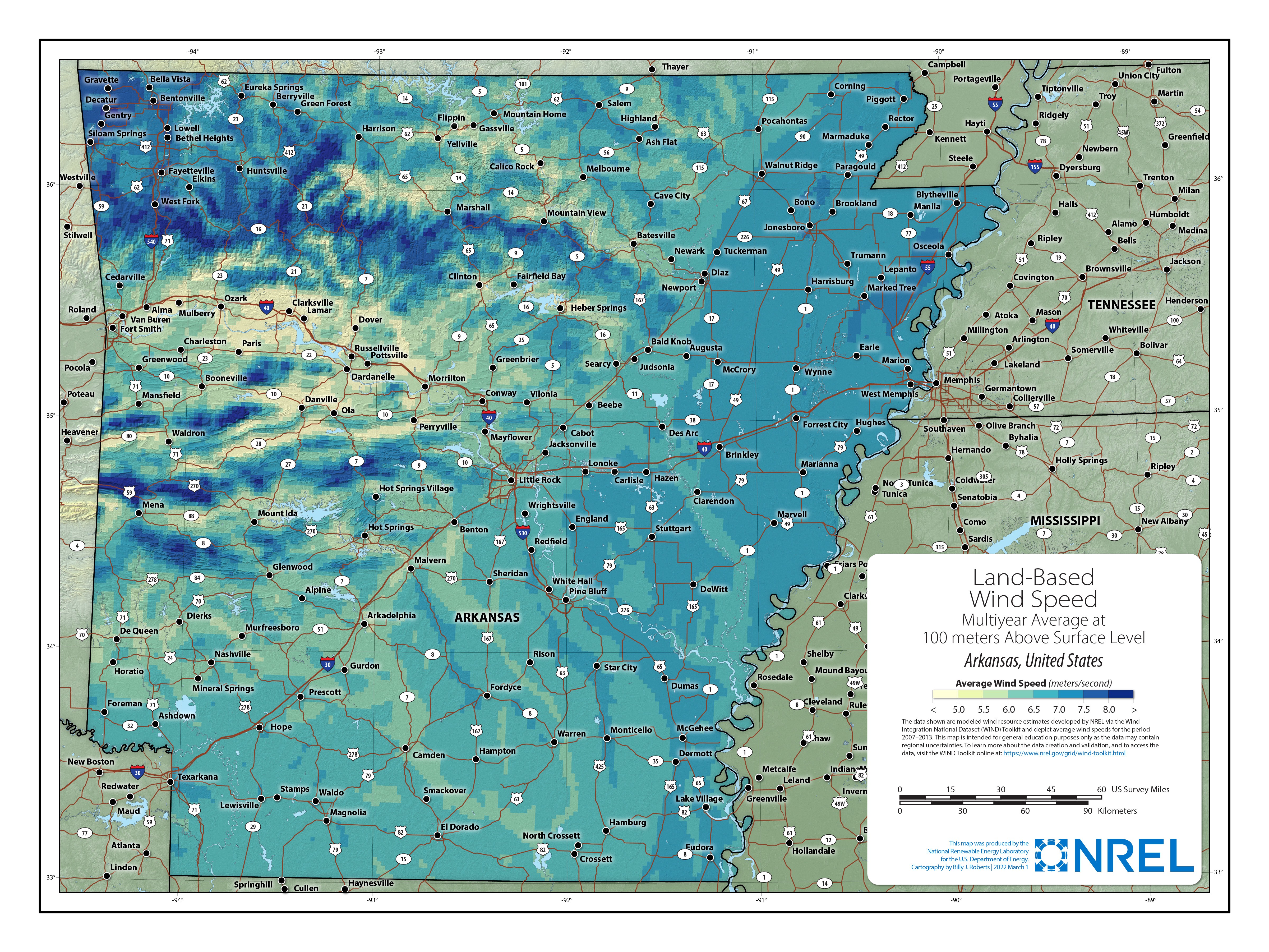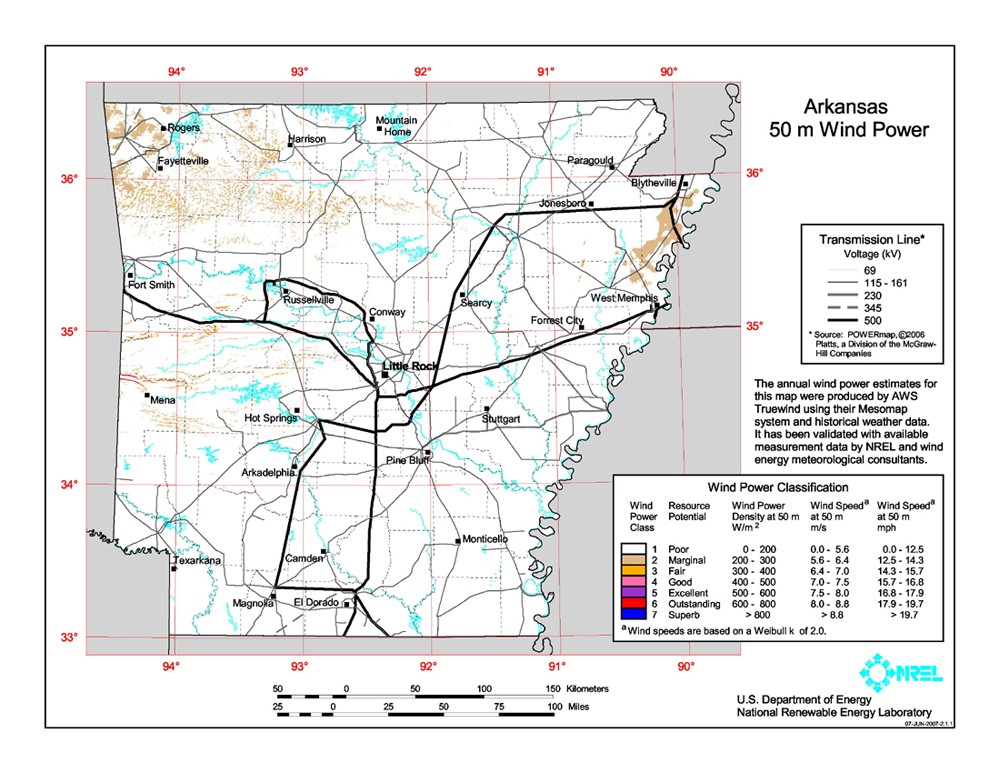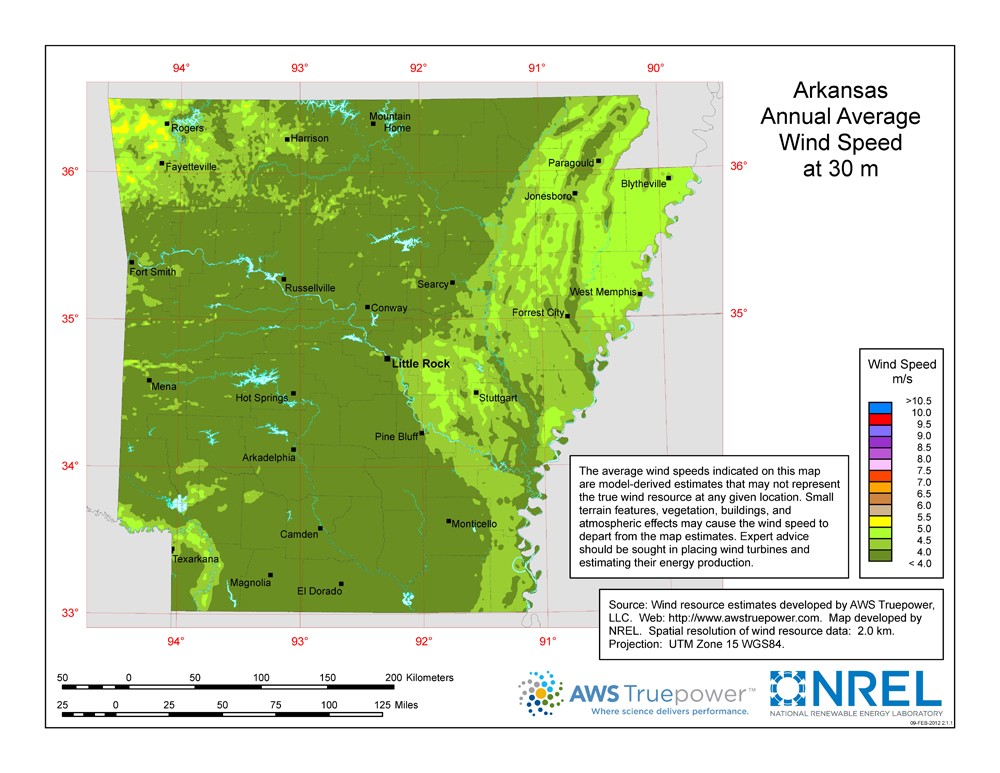Wind Energy in Arkansas
Find wind data and information in Arkansas, including maps, capacity, ordinances, and more in these areas:
Capacity & Generation
Installed Capacity 0 MW Source: American Clean Power Association
MW Under Construction 180 MW Source: American Clean Power Association
Based on EIA data from 2024
U.S. Wind Turbine Database
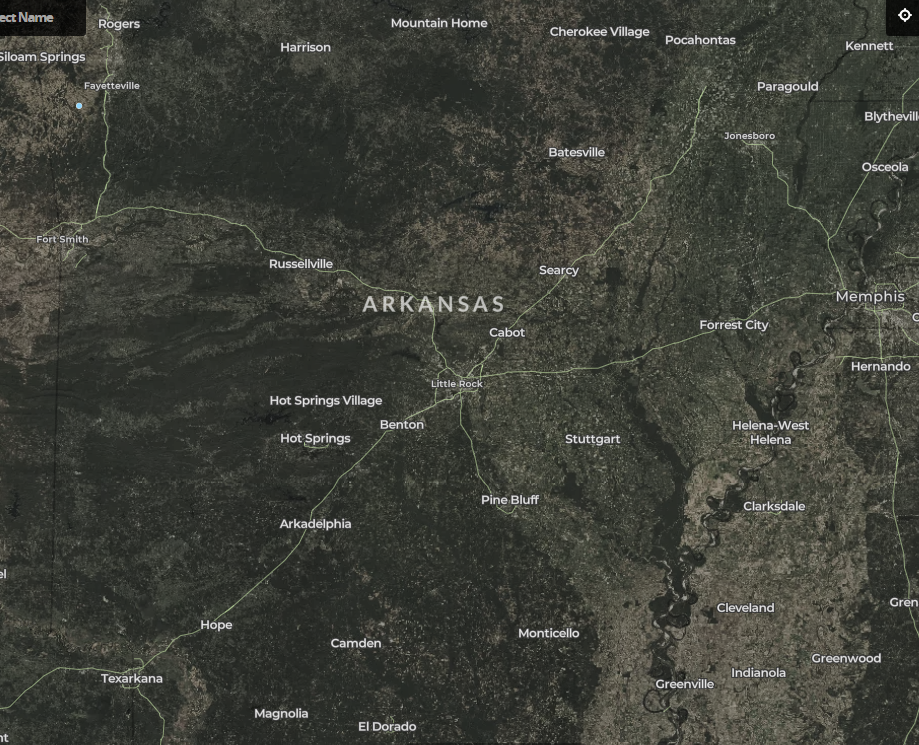
The United States Wind Turbine Database (USWTDB) provides the locations of land-based and offshore wind turbines in the United States, corresponding wind project information, and turbine technical specifications. The creation of this database was jointly funded by the U.S. Department of Energy Wind Energy Technologies Office via the Lawrence Berkeley National Laboratory Electricity Markets and Policy Group, the U.S. Geological Survey Energy Resources Program, and the American Wind Energy Association.
Wind Education & Training
Career training and projects at schools in Arkansas.
Training Locations
Arkansas State University
Wind for Schools Project Locations
There are no Wind for Schools projects in Arkansas.
Policies & Incentives
Arkansas Incentives
View current Arkansas renewable energy incentives on the DSIRE website.
Renewable Portfolio Standard
There are no Renewable Portfolio Standards for Arkansas.
There are no wind ordinances in Arkansas.
See ordinances in other states or check the DSIRE database of federal and state renewable energy policies and incentives.
AR Cities with 100% Renewable Energy Commitments
- Fayetteville - 2050
WETO R&D Projects
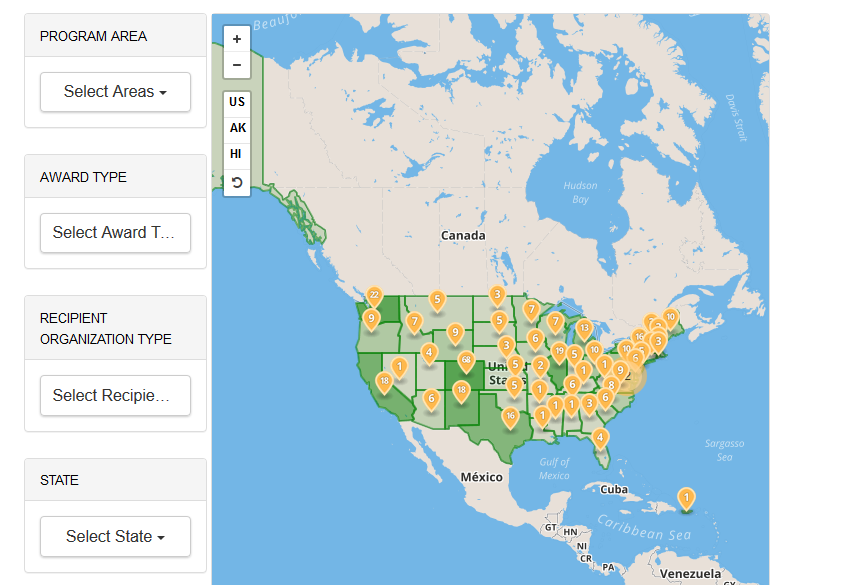
To view a list of wind research and development projects in Arkansas funded by the U.S. Department of Energy’s Wind Energy Technologies Office, visit the Wind R&D Projects Map and select Arkansas from the dropdown menu.
Wind Turbine Component Manufacturers
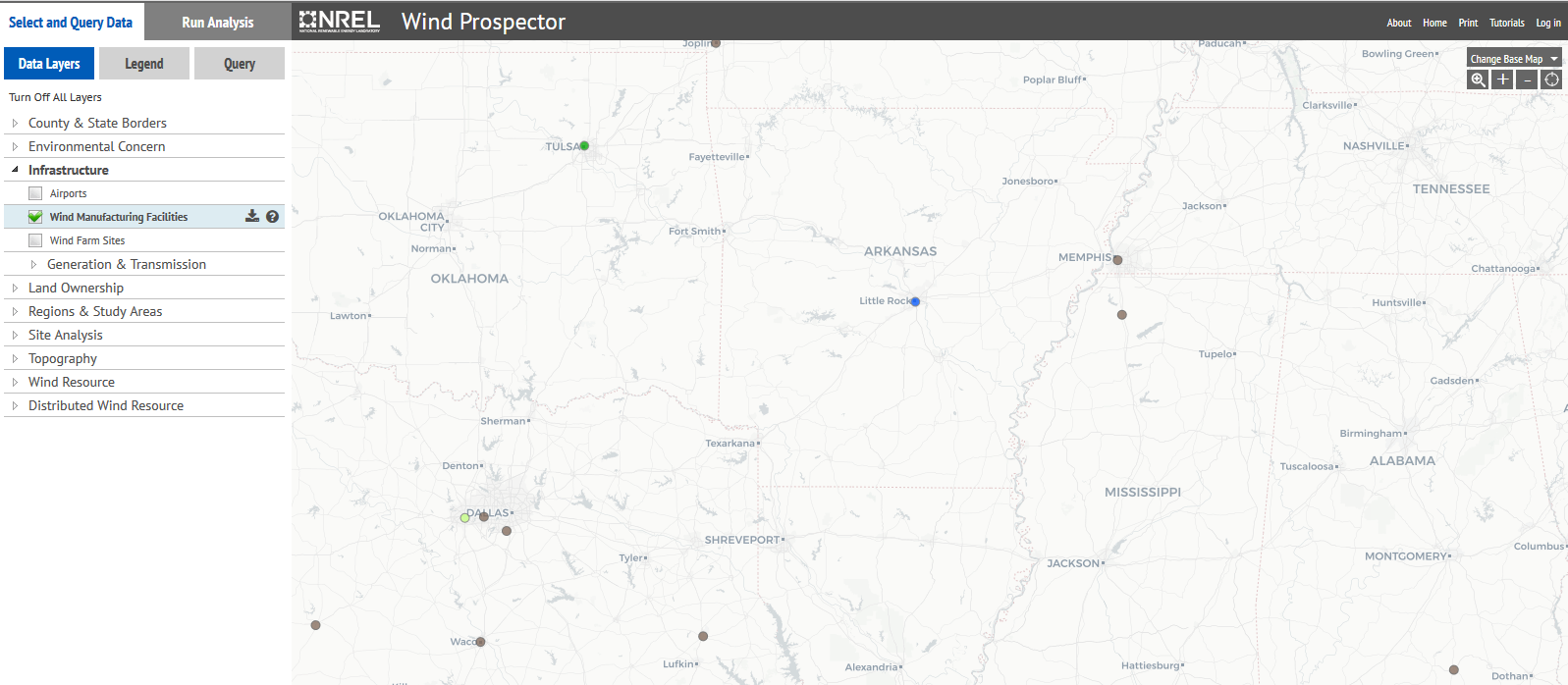
The National Renewable Energy Laboratory’s Wind Prospector tool is a web-based Geographical Information System that supports resource assessment and data exploration for wind development. Wind Prospector includes a data layer dedicated to the locations of U.S. wind turbine and component manufacturing and supply chain facilities. Corporate headquarters, service facilities, material suppliers, R&D and logistics centers, and smaller component manufacturers (e.g., bolt manufacturers) are not included. The list of facilities included is not intended to be exhaustive.
Arkansas Offices & Organizations
Advanced Power Alliance
The Advanced Power Alliance is the industry trade association created to promote the development of the wind energy resource as a clean, reliable, affordable, and infinite source of power. The Advanced Power Alliance is the wind energy industry’s voice within the Electric Reliability Council of Texas (ERCOT) and Southwest Power Pool (SPP) systems, including portions of Arkansas, Iowa, Kansas, Louisiana, Minnesota, Missouri, Montana, Nebraska, New Mexico, North Dakota, Oklahoma, South Dakota, Texas, and Wyoming. The organization works to expand transmission capacity, increase wind power use within the region, and facilitate wind power export.
Arkansas Advanced Energy Association
The Arkansas Advanced Energy Association is dedicated to growing the state’s economy through expanded utilization of advanced energy technologies.
Arkansas Energy Office
The Arkansas Energy Office promotes energy efficiency, clean technology, and sustainable strategies that encourage economic development, energy security, and the environmental well-being for all citizens of Arkansas.
Clean Energy Group
Clean Energy Group is a leading national, nonprofit organization working on innovative policy, technology, and finance programs in the areas of clean energy and climate change. The group's projects concentrate on climate and clean energy issues at the state, national, and international levels and include stakeholders from governments and the private and nonprofit sectors. Clean Energy Group assists states to create and implement innovative practices and public funding programs for clean energy project deployment; creates networks of U.S. and international policy makers to address climate stabilization strategies; and advances effective distributed innovation theories, finance, and commercialization tools for new climate technologies.
